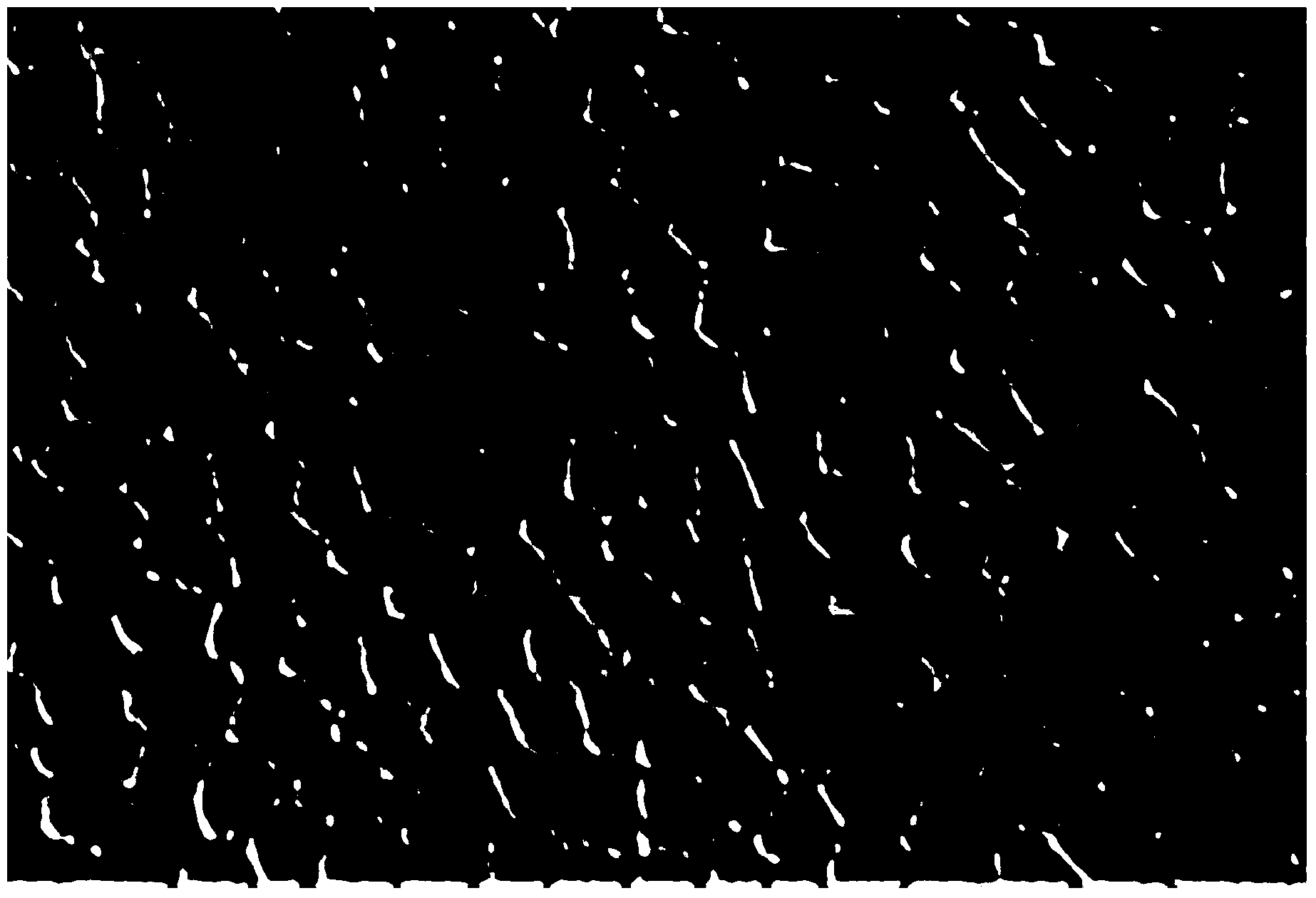Method of constructing corneal endothelium of tissue engineering
A corneal endothelium and tissue engineering technology, applied in the field of tissue engineering corneal endothelium, can solve the problems of low corneal endothelium feasibility, poor corneal endothelial proliferation ability, and scarce donors, so as to improve corneal edema, facilitate transplantation, and reduce rejection. Effect
- Summary
- Abstract
- Description
- Claims
- Application Information
AI Technical Summary
Problems solved by technology
Method used
Image
Examples
Embodiment 1
[0033] (1) Separation and acquisition of live amniotic membrane: the placenta was obtained from healthy cesarean section women (negative for HIV-I, hepatitis B, hepatitis C, and syphilis) who had signed an informed consent form in the hospital; The amniotic membrane was cut from the fresh placenta, the chorion was torn off, and then rinsed with 1×HBSS until smooth and transparent to obtain the live amniotic membrane, which was placed in SHEM medium. The whole process should be handled carefully and the epithelium must not be scratched.
[0034] (2) Spread the live cell-containing amniotic epithelium obtained in step (1) facing down on the culture insert, and put it into a six-well culture plate; add 200 μl of 2 mg / ml type IV collagenase to each of the above culture inserts , add 1.5ml SHEM medium to the culture plate below the plug-in to protect the epithelium, digest live amnion matrix at 37°C for 1h15min, after digestion, rinse with 1×PBS repeatedly to wash away type IV coll...
Embodiment 2
[0041] (1) Separation and acquisition of live amniotic membrane: the placenta was obtained from healthy cesarean section women (negative for HIV-I, hepatitis B, hepatitis C, and syphilis) who had signed an informed consent form in the hospital; The amniotic membrane was cut from the fresh placenta, the chorion was torn off, and then rinsed with 1×HBSS until smooth and transparent to obtain the live amniotic membrane, which was placed in SHEM medium. The whole process should be handled carefully and the epithelium must not be scratched.
[0042] (2) Spread the live cell-containing amniotic epithelium obtained in step (1) face down on the culture insert, and put it into a six-well culture plate; add 2mg / ml dispase II 200μl to each of the above culture inserts , add 1.5ml SHEM medium to the culture plate below the insert to protect the epithelium, digest live amnion matrix and basement membrane at 4°C for 2h30min, after digestion, rinse repeatedly with 1×PBS to wash away Dispase ...
Embodiment 3
[0049](1) Separation and acquisition of live amniotic membrane: the placenta was obtained from healthy cesarean section women (negative for HIV-I, hepatitis B, hepatitis C, and syphilis) who had signed an informed consent form in the hospital; The amniotic membrane was cut from the fresh placenta, the chorion was torn off, and then rinsed with 1×HBSS until smooth and transparent to obtain the live amniotic membrane, which was placed in SHEM medium. The whole process should be handled carefully and the epithelium must not be scratched.
[0050] (2) Spread the live cell-containing amniotic epithelium obtained in step (1) face down on the culture insert, and put it into a six-well culture plate; add 2mg / ml dispase II 200μl to each of the above culture inserts , add 1.5ml SHEM medium to the culture plate below the insert to protect the epithelium, digest live amnion matrix and basement membrane at 4°C for 2h30min, after digestion, rinse repeatedly with 1×PBS to wash away Dispase I...
PUM
 Login to View More
Login to View More Abstract
Description
Claims
Application Information
 Login to View More
Login to View More - R&D
- Intellectual Property
- Life Sciences
- Materials
- Tech Scout
- Unparalleled Data Quality
- Higher Quality Content
- 60% Fewer Hallucinations
Browse by: Latest US Patents, China's latest patents, Technical Efficacy Thesaurus, Application Domain, Technology Topic, Popular Technical Reports.
© 2025 PatSnap. All rights reserved.Legal|Privacy policy|Modern Slavery Act Transparency Statement|Sitemap|About US| Contact US: help@patsnap.com


